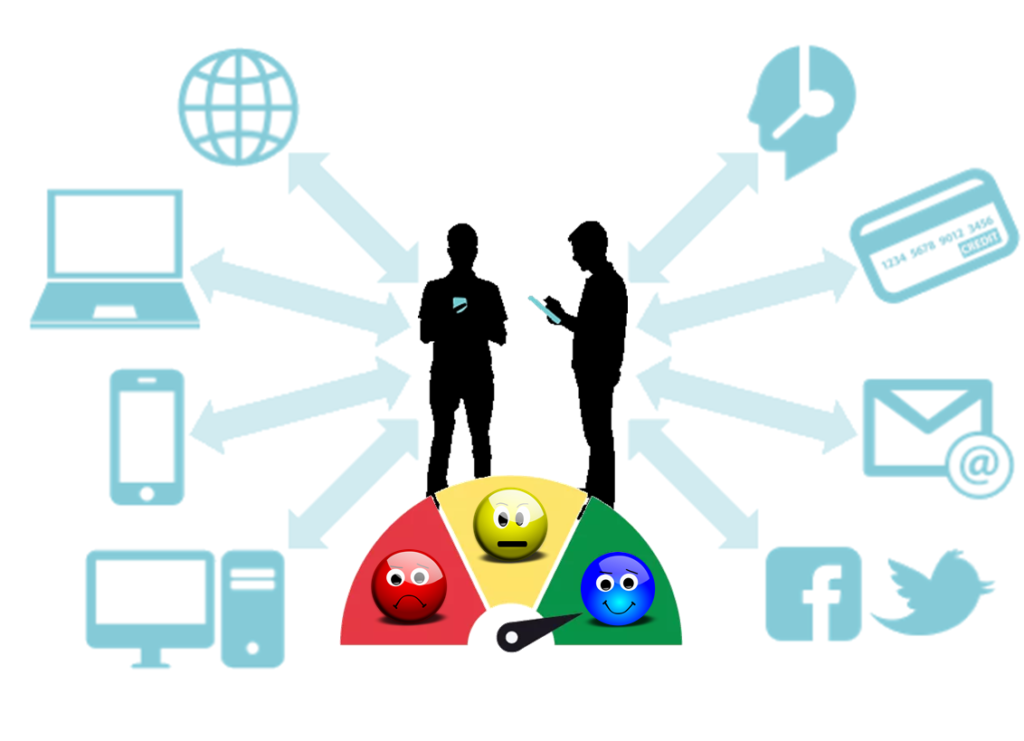You read a lot nowadays about the importance of providing potential customers with a good experience as they travel the digital path to purchase. But what does that really mean? Abhijit Saha, UPS’s European Marketing Director, writes, “It’s simple: Today’s online shopper wants choices, flexibility and options. You could say they want what they want when they want it.”[1] Saha admits that describing what’s involved in a good customer experience is really NOT that simple. “The not-so-simple part,” he writes, “is meeting that demand. But businesses will sink or swim based on how they handle that challenge.” If Saha is correct in his assertion that providing a good customer experience could make or break a company (and a lot of analysts believe he is), then understanding how that can be achieved is critical for any business involved in omnichannel operations.
Boston Consulting Group analysts have attempted to do just that.[2] Like Saha, they observe that providing a good customer experience is not easy. “In today’s omnichannel world,” they write, “consumers have many more ways to learn about and purchase products and services — such as through websites and social media, in a store, and on a device while on the go — than they have had in the past. With so many channels, platforms, and devices to get right, companies frequently struggle to coordinate and prioritize the many different ways that customers interact with brands. Worse yet, they have difficulty defining the right metrics to measure success.” Mike Austin (@MikeTheTechie), a serial entrepreneur, believes that the first thing a company must do is start with the premise that a good customer experience begins with personalization. He explains, “Personalization that’s triggered by the behavior of the customer and not just their name has, in many respects, become the most important element in the optimization of the customer journey.”[3] The BCG analysts have identified four factors that contribute to a good customer experience: value for money, customer service, product satisfaction, and emotional connection. They agree with Austin that personalization (i.e., the emotional connection companies make with customers) is the most important of these factors if you want to transform good customer experiences into great customer experiences. They explain:
“Value for money, customer service, and product satisfaction are certainly important. They remain the top factors in every industry, and without superior performance on these dimensions, a brand is unlikely to earn customers’ strong recommendations. But we find that once companies master these rational factors, an emotional connection often separates the good from the great. Emotional factors, which vary by industry, can include brand identification, social responsibility, innovation, and trustworthiness.”
Austin would argue that the emotional connection must go deeper than that. “Personalization done well,” he explains, “is all about being able to identify a customer and demonstrate that you know them — not just by their name, but by their behavior, the types of products they browse and items they have purchased in the past.” He continues:
“Personalization is understanding the demographics of an audience and suggesting to them ideas, information, products and services that others in the same group are showing interest in. Personalization is about understanding the journey your customers take with you (their preferred channels and devices) and where they are in their own personal journey. It’s being able to proactively engage with them, ideally in real-time and at the right time. In essence we are talking about injecting fresh relevance into your marketing communications and wider customer engagement, and relevance equals revenue. To put it bluntly — personalization is profitable.”
Evelien van der Hurk (@evdhurk), an Assistant Professor at the Technical University of Denmark, believes that customer experience is so important she concludes, “Supply chains are increasingly shaped by individual buyers.”[4] What is implied in the above discussion, but not explicitly stated, is that in order to provide a good customer experience companies need to have good data about their customers. Van der Hurk notes, “With so much information available, effective harvesting is crucial. Although the focus of many companies is on storing lots of data, the potential applications of big data are severely diminished if data is gathered and stored inconsistently. These inconsistencies often only show up during analysis.” To get a better understanding of how big data can help your company identify, segment, and target market to your ideal customers read my article entitled “Targeted Marketing Requires Persona Granularity.” Van der Hurk concludes, “Using information to streamline and personalise the customer experience will become more important as mobility and interconnectedness increases.”
Austin asserts, “One of the reasons personalization is still, in many respects, in its infancy is the misguided perception that it is complex and costly to implement and manage.” I agree with that assessment. As President and CEO of a cognitive computing firm, I know that emerging technologies can reduce most of the perceived pain associated with personalization. That’s because cognitive computing systems can handle many more variables than has been possible in the past and they can integrate and analyze both structured and unstructured data. On the up side, companies that implement cognitive computing solutions will find that they can be used for a lot more than targeted marketing. The digital path to purchase has added a new layer of complexity to marketing and cognitive computing systems can help deal with that complexity. The BCG analysts conclude, “The key challenge today involves managing the increasingly complex, omnichannel customer pathways that define the overall experience with a brand, and then to create positive brand advocacy as a result of that experience.” To accomplish that goal, they recommend the following steps:
Improve the omnichannel customer experience. The best companies develop a clear vision on the basis of insights about customer preferences. For example, a company may aim to provide personalized and relevant service, enabling customers to perform most operations across all touch points, resolve questions on the first interaction, and learn about the best uses of a product and about available support services. Leading companies also detail key customer pathways, with a focus on so-called moments of truth, which determine whether a customer will buy a product or choose to switch companies. They recognize that each channel has a defined role at each step on the customer pathway. At any point along the path, a customer may transition seamlessly among channels depending on what’s most convenient. For example, a customer may browse online with a mobile device, receive relevant offers through e-mail, and obtain service and support in a store. Companies can create an attractive business case by optimizing the key pathways on the basis of lifetime customer value and return on investment across channels, with each channel making a clear contribution to the major sources of value in the customer relationship. …
Proactively fuel higher advocacy. Companies with great customer experiences have a clear focus on specific and well-defined target customer segments, whose members share the same values as the brand and are aligned with the brand’s marketing goals. The crucial, most influential advocates — typically only 2 percent of a community — can be found in those segments. Next, such companies build relationships with these informal opinion leaders that go beyond the transactional. For instance, the most effective companies offer gifts that matter to target customers and increase affinity with the brand without expecting anything in return. This move simultaneously develops an experience that disrupts the status quo and compels people to talk about the brand. In addition, such companies foster ongoing, two-way communications and relationships across online and off-line platforms.
The future of retailing is going to be defined by omnichannel operations and the digital path to purchase. The link tying those two concepts together and helps ensure success is customer experience. Get it right and the future is yours.
Footnotes
[1] Abhijit Saha, “A Power Shift in Retail,” Longitudes, 11 October 2015.
[2] Dag Fredrik Bjørnland, Cyrus Ditzel, Pedro Esquivias, Jody Visser, Steve Knox, and Victor Sánchez-Rodríguez, “What Really Shapes the Customer Experience,” bcg.perspectives, 10 September 2015.
[3] Mike Austin, “Personalizing the Omni-Channel Ecommerce Experience,” Relevance, 2 September 2015.
[4] Evelien van der Hurk, “Personalisation equals profit: enriching the customer experience with big data,” Rotterdam School of Management Discovery, October 2015.





